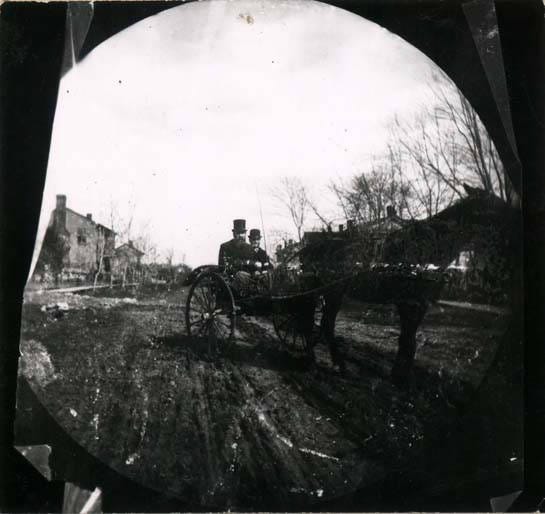Article Thoughts on Christensen's "William D. Swinney: Howard County Slaveholder and Entrepreneur." (2014)
Lawrence O. Christensen, “William D. Swinney: Howard County Slaveholder and Entrepreneur,” Missouri Historical Review 108, no. 4 (Jul. 2014), 236-252.
Article Here

Sometimes small and simple stories can tell us a lot about the past. Microhistories thrive on capturing a single person’s or persons’ experience or life and putting it into dialogue with what historians have assumed to be the prevalent culture of the time period. At times these microhistories completely upset traditional narratives. At other times, they simply confirm what historians already think. And others do a little bit of both.
Lawrence O. Christensen (1937-2016) a former historian who spent much of his career focused on Missouri history, wrote an article on the life of Howard County, Missouri settler and Glasgow, MO city founder William D. Swinney. Here a couple of his biggest arguments:
Swinney’s career shows how much central Missouri town building and slavery were intertwined with the Missouri River.
Slavery was a consistent and steady part of Missouri’s growth and economic development. Towns like Glasgow depended on the economic profits made from Swinney’s enslaved people. These elites ”would not have prospered” without slavery or made the international connections that they did.
Those are some of his main points as he narrates the life story of Swinney from a political and economic lens. While there are some points I don’t agree with (more on that later) I found several ideas/stories fascinating.
First, Swinney employed many of his enslaved people in “factories” where they processed tobacco for shipment. This is further evidence that industrialization and slavery were not inherently incompatible (older histories said industrialization was incompatible with slavery). Turns out, it probably wasn’t economics that led to people fighting against slavery. Second, Christensen points out an interesting fact that Swinney, at the start of the Civil War was a “Unionist” or a slaveholder who supported the Union. Missouri, a slave state that did not officially secede (though some of the people in the state attempted to do so) became the location for a veritable civil war inside a civil war. Missouri proved to be one of the most locally violent places in the Civil War. What is even more fascinating about Swinney’s Unionism is that at the same time he supported the United States in the war against the rebels, he also sent most of his enslaved people to Texas. Unfortunately, Christensen does not explore this more. Was Swinney sending them there to move them away from violence or did he suspect that the North would quickly turn abolitionist in its war aims and hoped to maintain his slaves in the South? Or was there some other reason? A pity nothing more was said on this. Finally, I found it interesting that Swinney’s son emancipated his enslaved people before the Emancipation proclamation. What caused this man to give up this source of wealth and power? Little is said on this as well. A final interesting tidbit was how two of Swinney’s enslaved people made it 100 miles down the Missouri before being caught and then escaped that night to never be apprehended. Small stories such as this also show that slavery was not an institution that the vast majority of enslaved people wanted to be a part of.
Some issues I had with this article. First, as noted in the previous paragraph, there are some areas that received little exploration, despite their significance. Another issue I had is his assertion that slaveholders could not have prospered without slavery. I am hesitant to make such assertions, particularly given the success entrepreneurs had in the North and West without the use of slavery. Again, one of the realities of the paradigm of slavery’s capitalism is a deemphasis on the role that free workers played in the economic development of the United States. This is not to say enslaved people did not generate vast amounts of wealth for the United States. But, to ignore non-slave work obscures a complex reality of the people that built the United States.1
Overall, this was an interesting article and I think that while some may find it dry, it is those little stories that help us truly understand the reality of Antebellum Americans. Small articles such as Christensen’s may not change the entire field of history, but they make a difference, one small article at a time.
Robert Swanson
At times I wonder if part of this emphasis is based in part on modern historians wish to change the political landscape of the current United States.



